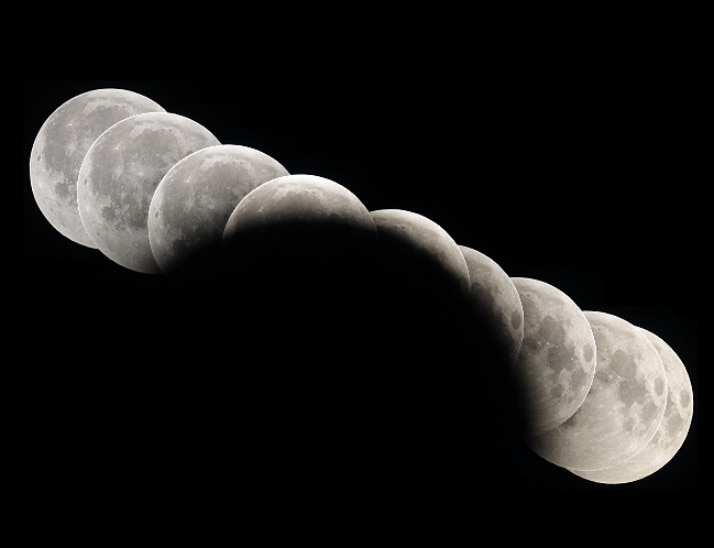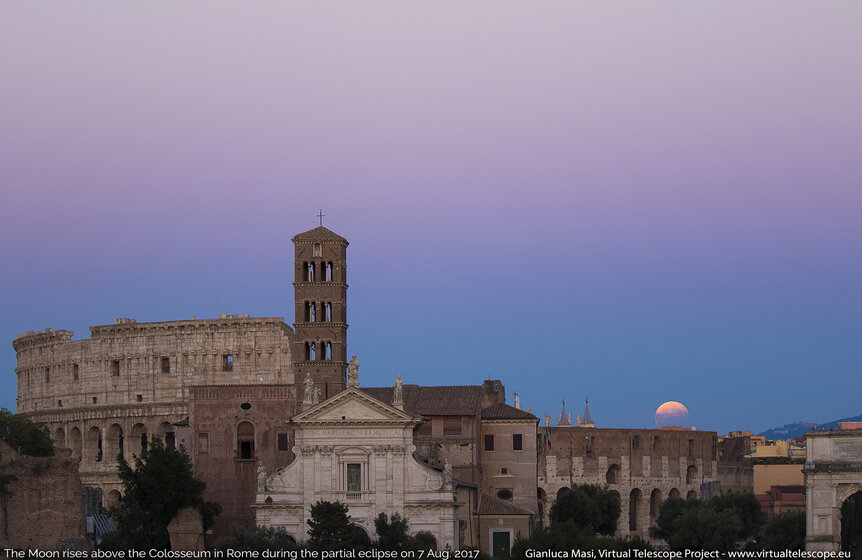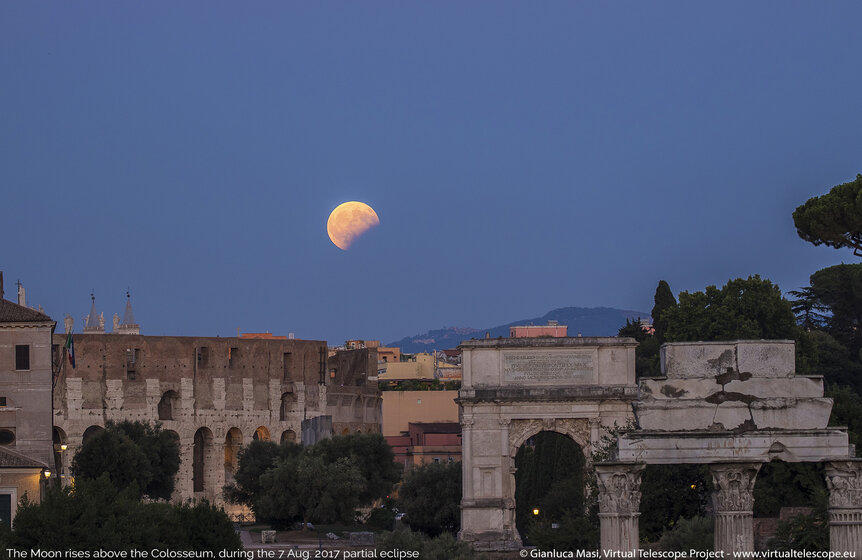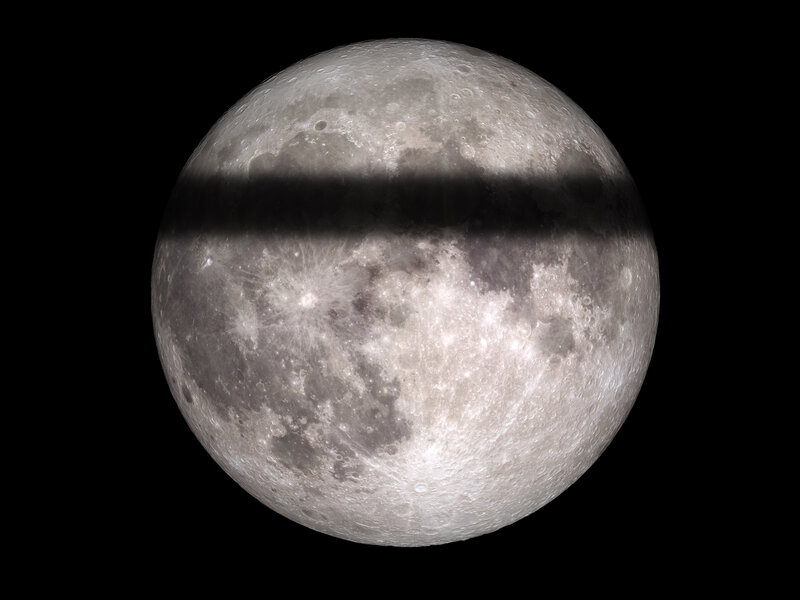Create a free profile to get unlimited access to exclusive videos, sweepstakes, and more!
Half a lunar orbit to go before the solar eclipse! In the meantime, here's a lunar eclipse.

The total solar eclipse over the United States is less than two weeks away! I wrote a two-part article (Part 1 and Part 2) about how and where to see it. If you haven’t made plans yet, then I strongly urge you to read those. Even if you have some plans, there are lots of links in those posts to help you out.
But here’s a funny thing: Whenever there is a solar eclipse, there’s almost always a lunar eclipse about two weeks before or after it! This is due to geometry.
It may help to watch this first: my Crash Course Astronomy episode on eclipses. It’s short, and explains everything!
An eclipse happens when the Moon’s orbit around the Earth aligns in such a way with the Earth’s orbit that the Moon can block the Sun and its shadow falls on Earth (a solar eclipse) or the Earth blocks the Sun and the Earth’s shadow falls on the Moon (a lunar eclipse). The Moon is smaller than the Earth, so its shadow is narrow. The geometry has to be pretty precisely aligned for that thin beam of shadow to fall on the Earth and cause a solar eclipse.
The Earth’s shadow is much larger, though, so it’s far easier for the Moon to slide into it. That means that conditions to get a solar eclipse are tougher than they are for a lunar eclipse; lunar eclipses happen more often. But the same geometry rules both! So if everything lines up well enough to get a solar eclipse, chances are you’ll get a lunar eclipse as well during that same lunar orbit. The Moon takes about 14.5 days to go from new Moon (when it’s near the Sun in the sky) to full Moon (when it’s opposite the Sun in the sky). That’s why solar eclipses generally have lunar eclipses two weeks before or after them.
This upcoming solar eclipse is no exception! On the evening of August 7, 2017, the full Moon passed through the Earth’s shadow, creating a partial lunar eclipse. It wasn’t visible from the U.S., but people in Europe, Africa, Asia, and Australia got a fine show.
Quite a few lovely photos have been posted online, but Gianluca Masi from the Virtual Telescope Project took some of the most beautiful I’ve seen.
In that shot you can see the partially eclipsed Moon, also thinly obscured by clouds, rising above the Colosseum in Rome, Italy. While the Moon can look very red in total lunar eclipses, in this case it looks red because it’s low to the horizon, the same reason the setting Sun can look very orange or red.
Another reason I like this photo is because of the pink band above the horizon; that’s called the Belt of Venus. The dark band below it is actually the shadow of the Earth on the sky itself! The solid body of the Earth blocks sunlight, and casts a shadow into space. The air is above the Earth, so we see that shadow on it. Think of it this way: Imagine you were hovering over the Earth in the sky; if you were in the dark band the Sun would have already set, but if you were in the pink band you’d see the Sun, deeply reddened, just above the horizon.
Masi took this next shot not too much later, when the Moon was higher and the sky was darker:
You can really see how the circular shadow of the Earth has taken a bite out of the Moon! You can tell that’s not just the normal phase of the Moon, because when the Moon is a crescent, the “horns” of the crescent are on opposite sides of the Moon. Here you can see the shadow is shallower.
And here’s a funny thing. Because the Earth is fairly spherical, the shadow it casts will always look like a circle projected on the Moon. This is always true as the Moon slides into that shadow; the shadow cast on the surface will look like a piece of a circle. In fact, if you align photos taken of the Moon at different times during the eclipse, you can see it even better:
That shot was created by astrophotographer Anthony Ayiomamitis during the August 2008 lunar eclipse. The Earth’s circular shadow is obvious.
Now, I haven’t talked much on my blog, or anywhere, about people who think the Earth is flat. The reason for this is that, sometimes, ideas are simply too dumb to waste much time on.
I don’t like to use words like that, but hey, in this case it’s both succinct and true. The Earth ain’t flat, and there are dozens of simple ways you can demonstrate that for yourself! But the photos here show it as well. If the Earth were flat, then you wouldn’t always see a circular shadow on the Moon! Sometimes the Earth would be edge-on to the Moon during the eclipse (when the Moon is near the horizon, either rising or setting), so what you’d actually get was this:
I created that image in Photoshop using a NASA simulated image of the full Moon and the “brush” tool. The reason I had to manufacture that image is because it doesn’t exist in reality. No one has ever seen the Earth’s shadow look like that, and the reason is simple: The Earth is a ball, not a disk.
Of course, if you read the Flat Earth Society’s web page about lunar eclipses you’ll see they don’t agree, but that’s because they’re utterly wrong about everything. It’s actually rather stunning to simply count how many ridiculous claims they make. I’d think it was a joke, Poe’s Law gone horribly awry, but it’s clear some people take it seriously. This guy is quite the example.
While I don’t like to extrapolate too much from limited info, it’s pretty telling that he also thinks NASA is run by Jews. As I’ve said before, once you fall off the narrow path to reality, any manner of nonsense can seem possible.
And falling off a flat Earth is easy. Falling off a spherical one is bit harder.
But all that brain rot aside, there's some real astronomy coming up. Less than half a lunar orbit to go. I’m getting excited!
By the way, Masi and the Virtual Telescope Project will be holding a live online viewing session of the upcoming Perseid meteor shower on August 12 and a live viewing of the solar eclipse from telescopes in the path of totality on Aug. 21. Tune in!





























